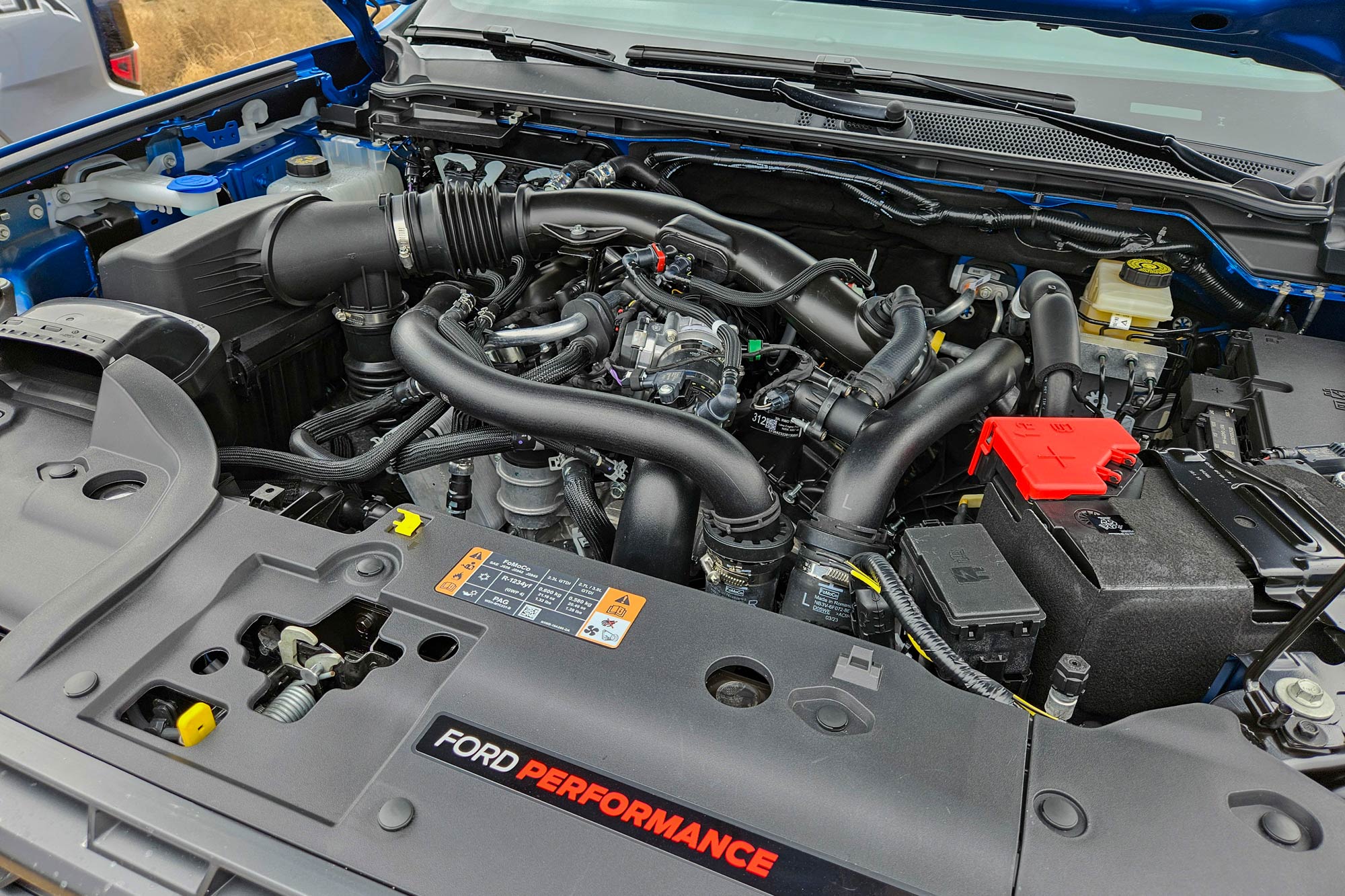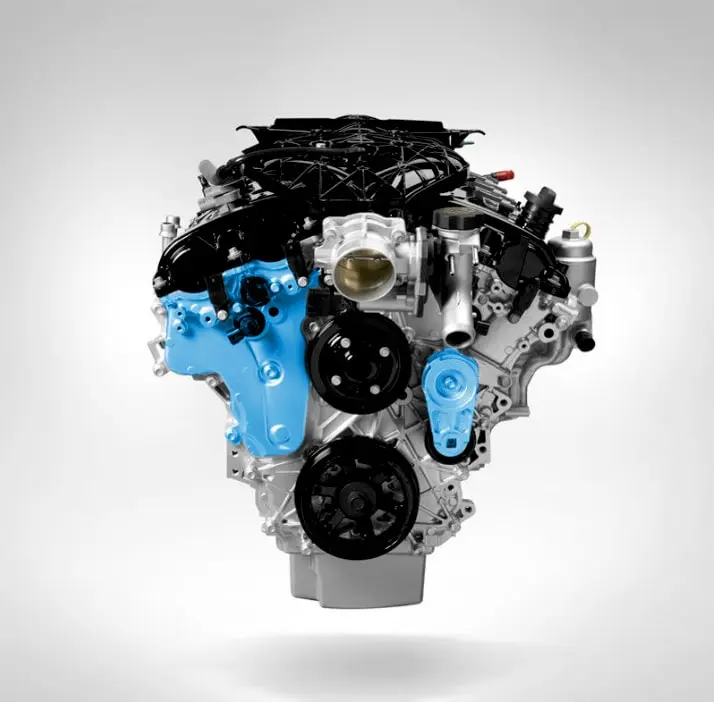Top Benefits of Choosing the 2.2 Ford Ranger Engine for Your Next Pickup
Top Benefits of Choosing the 2.2 Ford Ranger Engine for Your Next Pickup
Blog Article
Recognizing the Fundamentals of Auto Engines: Types, features, and features

Summary of Automobile Engines
An automobile engine offers as the heart of a lorry, transforming fuel into mechanical power to thrust it onward. This elaborate system consists of various components that work in unison to ensure optimal performance and efficiency. The basic procedure of an auto engine includes the interior combustion procedure, where fuel and air are combined, ignited, and gotten rid of to create power.
The engine's style can dramatically affect its performance, fuel performance, and emissions. Secret elements include the cyndrical tube block, pistons, crankshaft, and camshaft, each playing a crucial duty in the engine's general function. The cylinder block houses the cyndrical tubes where combustion happens, while the pistons transform the eruptive energy from burning right into straight activity. This activity is after that transformed right into rotational energy by the crankshaft, enabling the lorry's wheels to transform.
In enhancement to these parts, engines frequently make use of numerous systems such as gas shot, ignition, and cooling systems to boost efficiency and long life. Comprehending the standard auto mechanics of auto engines is vital for carrying out and detecting problems upkeep, eventually adding to the car's dependability and effectiveness gradually.

Kinds Of Automobile Engines
Vehicle engines can be classified into numerous kinds based on their design, gas kind, and functional concepts. 2.2 ford ranger engine. The most typical categories include inner combustion engines (ICE), electric engines, and hybrid engines
Inner combustion engines, which can be more separated into gasoline and diesel motor, operate by sparking a fuel-air mixture to produce power. Fuel engines are usually lighter and smoother, while diesel motor are more fuel-efficient and deal better torque.
Electric engines use electric power stored in batteries to power an electric motor, offering immediate torque and no exhausts throughout operation. As technology breakthroughs, electrical vehicles (EVs) are progressively becoming prominent for their ecological benefits and reduced running prices.
Crossbreed engines integrate components of both interior combustion and electrical engines, permitting adaptable source of power and improved gas effectiveness. They can run in different modes, utilizing either the fuel engine, the electrical motor, or both concurrently.
Each kind of engine has unique advantages and drawbacks, affecting their application in various car types and market sectors, from portable cars to heavy-duty vehicles. Comprehending these types is necessary for making educated decisions regarding vehicle selection and performance expectations.
Engine Features Discussed
Understanding engine functions is critical for grasping exactly how lorries run successfully. At the core of any type of interior combustion engine lies the fundamental process of converting gas right into mechanical power. This procedure starts with the consumption stroke, where air and fuel are attracted right into the burning chamber. Following this, the compression stroke presses the air-fuel combination, raising its temperature level and pressure.
The ignition happens following, sparking the blend and creating a fast development of gases. This force drives the piston down throughout the power stroke, which inevitably translates into the rotational movement of the crankshaft. The exhaust stroke then removes the spent gases from the chamber, making way for a new cycle to begin.
Along with these key functions, engines also include systems that manage air conditioning and lubrication, guaranteeing ideal functional temperatures and lowering friction this article in between relocating parts. This intricate interaction of functions enables the engine to generate the power required for vehicle propulsion while preserving efficiency and reliability. Comprehending these functions provides beneficial insight right into the complexities of vehicle design and enhances the capability to diagnose and resolve engine-related problems successfully.
Key Engine Attributes
Engine layout incorporates several crucial features that dramatically affect toughness, efficiency, and efficiency. Among the most vital facets is the engine setup, which consists of inline, V-type, and level styles. Each arrangement affects the engine's equilibrium, dimension, and power output, consequently influencing total automobile characteristics.
An additional vital function is the engine displacement, describing the total volume of all cyndrical tubes. Bigger variations normally yield more power yet may jeopardize gas performance. Engine materials likewise play a pivotal function; lightweight and high-strength products, such as light weight aluminum and magnesium alloys, improve performance without adding too much weight.
The kind of fuel injection system employed-- such as multi-port or direct shot-- impacts combustion performance and exhausts. Turbo charging and turbocharging are functions that boost engine efficiency forcibly additional air into the combustion chamber, boosting power outcome without dramatically enhancing engine dimension.
Lastly, the existence of innovative engine management systems enhances fuel-air mixture and ignition timing, contributing to smoother operation and much better fuel economic situation. Jointly, these functions specify an engine's capacities, establishing the foundation for its efficiency and durability in a competitive auto landscape.
Maintenance Tips for Engines
Appropriate engine maintenance is critical for guaranteeing optimal performance and long life, as disregarding regular treatment can result in considerable concerns down the line. To preserve your engine properly, start with regular oil changes, commonly every 3,000 to 7,500 miles, depending on the sort of oil used. Fresh oil lubes engine elements, lowering rubbing and wear.
In addition, keeping an eye on coolant levels is vital to prevent overheating. Ensure that the coolant is topped up and remains in great problem to keep reliable temperature level guideline. Regularly examine and replace air and gas filters, as clogged up filters can hinder air movement and fuel distribution, compromising engine effectiveness.
Furthermore, take notice of spark plugs and ignition systems. Worn or malfunctioning spark plugs can lead to misfiring and decreased efficiency. Examining the battery terminals and links for corrosion is also essential, as a weak battery can influence engine starting.

Verdict
In summary, a comprehensive understanding of cars and truck engines includes various types, features, and crucial attributes that dramatically influence car efficiency. Inner burning engines, together with electrical and hybrid choices, demonstrate diverse mechanisms for energy conversion. 2.2 ford ranger engine. Acknowledging the necessary functions, such as consumption and exhaust cycles, together with vital engine Web Site features like configuration and gas shot systems, equips cars and truck owners with the expertise necessary for effective maintenance and operation, eventually improving vehicle durability and effectiveness
A car engine serves as the heart of an automobile, converting fuel into mechanical energy to propel it forward. The fundamental operation of an automobile engine includes the interior burning procedure, in which gas and air are blended, sparked, and eliminated to develop power.
Consistently examine and change air and fuel filters, as clogged up filters can prevent air flow and fuel delivery, endangering engine effectiveness. - 2.2 ford ranger engine
In summary, a detailed understanding of vehicle engines includes different types, features, and essential features that substantially affect automobile performance. Identifying the necessary features, such as intake and exhaust cycles, alongside essential view engine features like arrangement and gas injection systems, equips car proprietors with the knowledge necessary for effective maintenance and operation, eventually boosting automobile longevity and efficiency.
Report this page